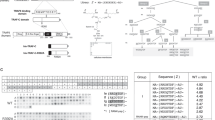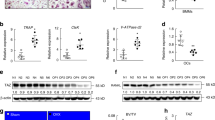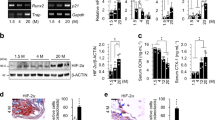Abstract
Histone deacetylase inhibitors (HDIs), a new class of anti-cancer agents, have been reported to suppress formation of osteoclast precursors and their fusion into multinucleated cells. However, little is known about the effect of HDIs on mature osteoclasts, which may have significance for their therapeutic use. Here, we demonstrate a novel action of HDIs on osteoclast apoptosis. Primary multinucleated mature osteoclasts were prepared from mouse bone marrow cells. Treatment of osteoclasts with the HDI trichostatin A (TSA) caused apoptosis, as confirmed by annexin V staining and caspase activation. TSA caused the upregulation of p21WAF1 in osteoclasts. To understand the role of p21WAF1 upregulation in TSA-treated osteoclasts, shRNA against p21WAF1-containing lentivirus was introduced into osteoclasts. The suppression of p21WAF1 decreased TSA-directed osteoclast apoptosis. Collectively, our results provide evidence that TSA causes osteoclast apoptosis, which involves, in part, TSA-induced upregulation of p21WAF1, and strongly supports HDIs as potential therapeutic agents for excessive bone resorption.
Similar content being viewed by others
Article PDF
Author information
Authors and Affiliations
Rights and permissions
This is an Open Access article distributed under the terms of the Creative Commons Attribution Non-Commercial License (http://creativecommons.org/licenses/by-nc/3.0/) which permits unrestricted non-commercial use, distribution, and reproduction in any medium, provided the original work is properly cited.
About this article
Cite this article
Yi, T., Baek, JH., Kim, HJ. et al. Trichostatin A-mediated upregulation of p21WAF1 contributes to osteoclast apoptosis. Exp Mol Med 39, 213–221 (2007). https://doi.org/10.1038/emm.2007.24
Published:
Issue date:
DOI: https://doi.org/10.1038/emm.2007.24
Keywords
This article is cited by
-
Harnessing the HDAC–histone deacetylase enzymes, inhibitors and how these can be utilised in tissue engineering
International Journal of Oral Science (2019)
-
BMSCs reduce rat granulosa cell apoptosis induced by cisplatin and perimenopause
BMC Cell Biology (2013)
-
Analysis of histone deacetylase inhibitor-induced responses in human periodontal ligament fibroblasts
Biotechnology Letters (2013)
-
REG gamma: a potential marker in breast cancer and effect on cell cycle and proliferation of breast cancer cell
Medical Oncology (2011)
-
The effects of JNJ-26481585, a novel hydroxamate-based histone deacetylase inhibitor, on the development of multiple myeloma in the 5T2MM and 5T33MM murine models
Leukemia (2009)



